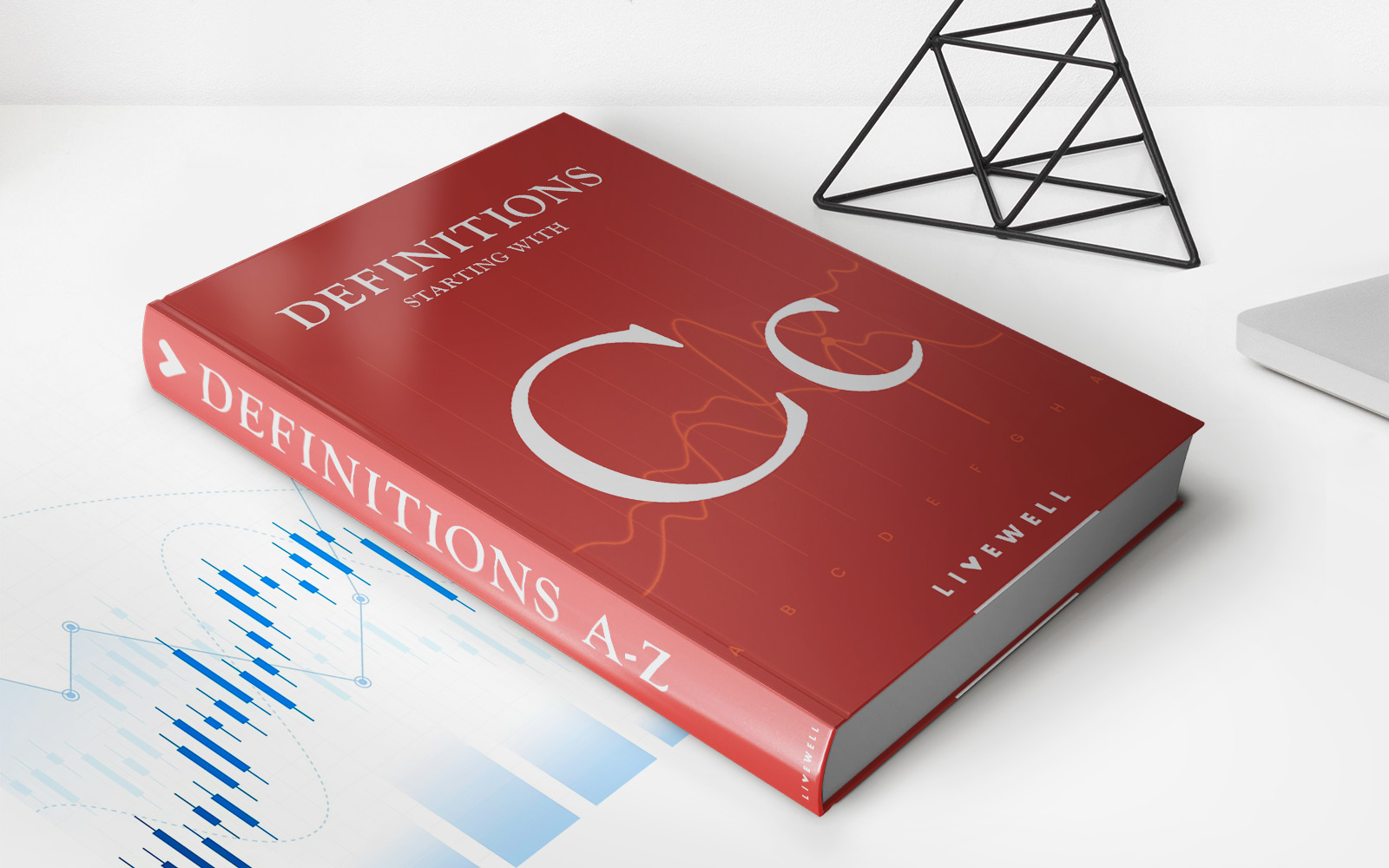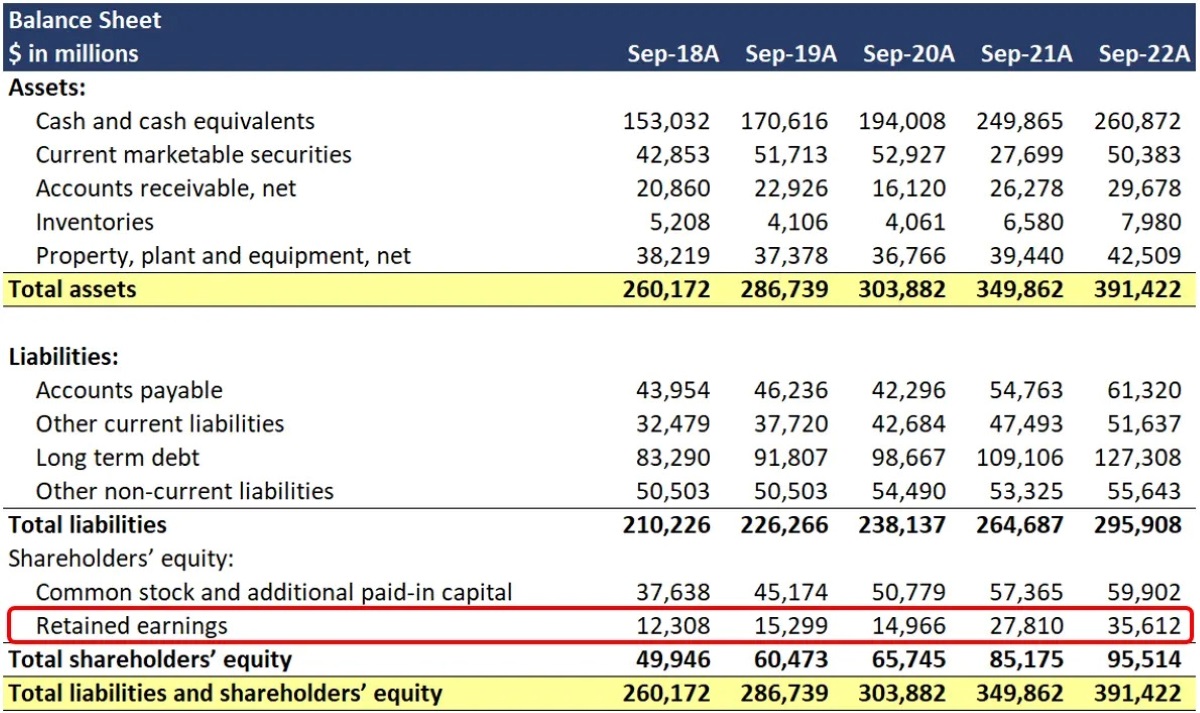Home>Finance>How To Include Federal Pension In Retirement Planning


Finance
How To Include Federal Pension In Retirement Planning
Published: January 21, 2024
Learn how to effectively include your federal pension in your retirement planning. Get expert financial advice and tips on managing your finances for a secure future.
(Many of the links in this article redirect to a specific reviewed product. Your purchase of these products through affiliate links helps to generate commission for LiveWell, at no extra cost. Learn more)
Table of Contents
- Introduction
- Understanding Federal Pensions
- Evaluating the Value of Your Federal Pension
- Incorporating Your Federal Pension into Retirement Savings
- Strategies for Maximizing Your Federal Pension Benefits
- Balancing Your Federal Pension with Other Retirement Income Sources
- Tax Considerations for Federal Pension Benefits
- Adjusting Your Retirement Plan for Inflation and Cost of Living Increases
- Reviewing and Updating Your Federal Pension Plan Regularly
- Conclusion
Introduction
Planning for retirement is a crucial endeavor that requires careful consideration of various factors, including income sources, expenses, and personal financial goals. For those employed in federal government positions, one essential aspect of retirement planning is understanding and incorporating the benefits of a federal pension.
A federal pension is a retirement benefit offered to eligible federal employees, providing them with a steady stream of income during their retirement years. This type of pension is highly valued for its stability and security, as it is backed by the federal government.
However, many federal employees are unsure about how to properly integrate their federal pension into their overall retirement plan. This article aims to shed light on this topic and provide guidance on optimizing the value of your federal pension.
In this article, we will explore the intricacies of federal pensions, assess their worth, and discuss strategies for effectively incorporating them into your retirement savings plan. We will also examine the importance of balancing federal pension benefits with other sources of retirement income and address key tax considerations that may impact your overall retirement plan.
Furthermore, we will discuss the significance of adjusting your retirement plan for inflation and cost of living increases, as well as the importance of regularly reviewing and updating your federal pension plan to ensure it aligns with your changing financial situation and evolving retirement goals.
By the end of this article, it is our goal to equip you with the knowledge and tools necessary to include your federal pension as a valuable component of your retirement planning strategy. Let us now delve into the details of federal pensions and uncover the best approaches to maximize their benefits.
Understanding Federal Pensions
A federal pension is a retirement benefit provided to eligible federal employees based on their length of service and salary history. It is designed to provide a stable and predictable income stream during retirement, ensuring financial security for federal employees after their working years.
One key feature of federal pensions is the defined benefit plan structure. Unlike defined contribution plans, such as 401(k) or IRAs, where the retirement benefits depend on the contributions made by the employee and the investment returns, federal pensions guarantee a specific monthly payment based on a formula that factors in years of service and average salary.
The amount of the federal pension payment is calculated based on a formula that takes into account the employee’s average highest salary (known as the High-3) over a defined period, typically the three consecutive years of highest earnings. The formula also considers the employee’s length of service, with longer service resulting in a higher percentage of the average salary for the pension calculation.
It’s important to note that the Federal Employee Retirement System (FERS) is the retirement system that covers most federal employees hired after 1983. FERS includes a three-tiered approach to retirement benefits which includes the basic retirement pension, the Thrift Savings Plan (TSP), and Social Security benefits. On the other hand, the Civil Service Retirement System (CSRS) covers employees who were hired before 1983 and operates on a slightly different set of rules.
Federal employees become eligible for their retirement benefits after reaching certain age and service requirements. For FERS employees, the minimum age for retirement varies depending on the individual’s birth year and years of service. CSRS employees are eligible for retirement at age 55 with at least 30 years of service or at age 60 with at least 20 years of service.
Understanding the basic structure and eligibility requirements of federal pensions is crucial for effectively incorporating this benefit into your retirement planning. In the next section, we will explore how to evaluate the value of your federal pension and leverage it to achieve your retirement goals.
Evaluating the Value of Your Federal Pension
When it comes to planning for retirement, accurately assessing the value of your federal pension is essential. This evaluation will help you determine how much of your retirement income will come from your pension and how it will complement other sources of income.
One way to evaluate the value of your federal pension is to calculate the estimated monthly payment you can expect to receive. You can use online calculators or consult with a retirement specialist to estimate this amount based on factors such as years of service, average salary, and retirement age.
It’s important to keep in mind that federal pensions are typically calculated based on a percentage of your average highest salary, also known as the High-3. This means that increasing your salary or extending your length of service can have a significant impact on the overall value of your pension.
In addition to the monthly pension payment, it’s also important to consider the other benefits that come with a federal pension. These may include cost-of-living adjustments (COLA), health insurance options, and survivor benefits for your spouse or dependents. By factoring in these additional benefits along with the monthly pension payment, you can get a more comprehensive understanding of the value your federal pension brings to your retirement plan.
Furthermore, assessing the financial stability of the federal pension system is crucial. While federal pensions are generally considered secure due to government backing, it’s important to stay informed about any changes or reforms to the system that may impact the value or availability of your pension benefits. Keeping up-to-date with any legislative or administrative changes is essential for making informed decisions about your retirement planning.
Lastly, consider how your federal pension fits into your overall retirement income plan. Take into account any other sources of income you anticipate during retirement, such as Social Security benefits, savings, investments, and other retirement accounts. Evaluating the value of your federal pension in the context of your total retirement income will help form a comprehensive and realistic picture of your financial future.
By carefully evaluating the value of your federal pension, considering additional benefits, staying informed about the system’s stability, and integrating it into your larger retirement income plan, you can ensure that you are maximizing the value and optimizing the role of your federal pension in your retirement planning.
Incorporating Your Federal Pension into Retirement Savings
Integrating your federal pension into your retirement savings plan is essential for creating a comprehensive and sustainable financial strategy. By carefully considering how your federal pension aligns with other retirement savings, you can ensure a secure and comfortable retirement.
One key aspect of incorporating your federal pension into your retirement savings is understanding the role it plays in generating your desired retirement income. Start by estimating your monthly expenses during retirement and determining how much of that income will be covered by your federal pension. This will help you identify any gaps that need to be filled by other income sources, such as savings, investments, or Social Security benefits.
Once you have a clear understanding of your federal pension’s contribution to your retirement income, you can make informed decisions about how much to save in other retirement accounts, such as a 401(k), Individual Retirement Account (IRA), or the Thrift Savings Plan (TSP).
Consider maximizing your contributions to these accounts, especially if your federal pension does not cover all of your retirement expenses. The TSP, for instance, allows federal employees to contribute a portion of their salary on a pre-tax basis, potentially reducing their taxable income and providing additional savings for retirement.
Another consideration is diversifying your retirement savings to mitigate risk. While federal pensions are generally considered secure, it’s always wise to have a backup plan in case of unforeseen circumstances. Allocate a portion of your retirement savings to investments that offer growth potential, such as stocks or mutual funds. Diversification can help protect your retirement portfolio against fluctuations in the market and provide potential additional income.
Additionally, review and adjust your retirement savings strategy periodically. As you progress through your career and your financial situation evolves, assess whether your current savings rate and investment strategy align with your retirement goals. If necessary, make adjustments to ensure you are on track to achieve your desired retirement lifestyle.
Lastly, seek professional guidance from a financial advisor who understands the intricacies of federal pensions and retirement planning. They can provide personalized advice and help you navigate the complexities of integrating your federal pension into your overall retirement savings plan.
By carefully incorporating your federal pension into your retirement savings plan, diversifying your income sources, reviewing your strategy regularly, and seeking professional advice, you can ensure a well-rounded financial approach that maximizes the benefits of your federal pension and secures a comfortable retirement.
Strategies for Maximizing Your Federal Pension Benefits
While federal pensions offer a secure retirement income, there are several strategies you can employ to maximize the benefits and optimize your financial situation during retirement. By implementing these strategies, you can make the most of your federal pension and enhance your overall retirement plan.
1. Stay in federal service for longer: The longer you stay in federal service, the higher your pension benefits will be. Consider the impact of your retirement age and length of service on your pension calculation, and evaluate whether extending your federal service could significantly boost your pension income.
2. Increase your salary during your highest earning years: As federal pensions are calculated based on the highest average salary (High-3) earned during specific years of service, strategically increasing your salary during these years can positively impact your pension benefits. Look for opportunities for promotions, additional responsibilities, or specialized training that can help boost your earnings during your highest earning years.
3. Take advantage of survivor benefits: Federal pensions often offer survivor benefits for your spouse or eligible dependents. By choosing the appropriate survivor benefit option, you can ensure that your loved ones are financially supported in the event of your passing. However, it is important to carefully evaluate the cost and impact on your pension income before making a decision.
4. Coordinate with Social Security benefits: If you are eligible for both federal pension benefits and Social Security benefits, coordinate the timing of these two income sources. By strategically planning when to start receiving each benefit, you can optimize your overall retirement income and potentially minimize any reduction in Social Security payments due to the Windfall Elimination Provision (WEP) or the Government Pension Offset (GPO).
5. Leverage the Thrift Savings Plan (TSP): The TSP is a valuable retirement savings vehicle available to federal employees. Take full advantage of this plan by contributing the maximum amount allowed, especially if your agency offers matching contributions. Consider a mix of investment options within the TSP to diversify your retirement portfolio and potentially enhance your overall pension benefits.
6. Consider part-time work in retirement: If you are not ready to fully retire but still want to benefit from your federal pension, consider part-time employment. This allows you to continue receiving your pension benefits while earning additional income, allowing for a more comfortable retirement.
7. Stay informed about changes and updates: Keep yourself informed about any changes or updates to federal pension regulations or policies. Stay connected with your human resources department, attend retirement planning seminars, and consult with financial advisors who specialize in federal pension benefits. By staying up-to-date, you can ensure you are making the most informed decisions regarding your federal pension.
Implementing these strategies can help maximize the value and benefits of your federal pension, enabling you to enjoy a secure and fulfilling retirement.
Balancing Your Federal Pension with Other Retirement Income Sources
When planning for retirement, it’s important to consider how your federal pension fits into your overall retirement income picture. While your federal pension provides a stable and consistent source of income, it’s likely that you will have additional income from other sources. Balancing these income sources is crucial for creating a well-rounded and sustainable retirement plan.
One key factor to consider is Social Security benefits. Many federal employees are eligible for Social Security benefits in addition to their federal pension. Understanding how these benefits interact and coordinating the timing of when to begin receiving each source of income is important.
Take into account the impact of the Windfall Elimination Provision (WEP) and the Government Pension Offset (GPO) on your Social Security benefits. These provisions may reduce the amount of Social Security benefits you receive due to your federal pension. Evaluating the potential reduction in Social Security benefits and factoring that into your overall retirement income plan is crucial for maintaining financial stability.
In addition to Social Security, you may have other retirement savings and investments, such as a 401(k), Individual Retirement Account (IRA), or other investment accounts. These accounts can provide additional income during retirement and help bridge any gaps between your federal pension and your desired lifestyle.
Consider diversifying your retirement savings across a range of investment options, such as stocks, bonds, and mutual funds, to potentially generate higher returns. This diversification can help mitigate risk and provide opportunities for growth beyond the steady income provided by your federal pension.
Furthermore, evaluate any other potential income sources, such as rental properties, part-time employment, or pensions from previous employers. By maximizing your income from various sources, you can create a more resilient and diverse retirement income stream.
It’s important to balance your retirement income sources to ensure that you have enough income to cover your expenses while also accounting for inflation and potential changes in living costs. Regularly reviewing and adjusting your retirement income plan will help you maintain financial stability throughout your retirement years.
Seeking professional financial advice can be highly valuable in achieving the right balance between your federal pension and other income sources. A financial advisor with expertise in retirement planning can help you assess your specific financial situation, coordinate income sources, and create a personalized strategy that optimizes your retirement income.
By striking a balance between your federal pension, Social Security benefits, other retirement savings, and potential additional income sources, you can create a well-rounded retirement plan that ensures financial security and allows you to enjoy your retirement years to the fullest.
Tax Considerations for Federal Pension Benefits
When planning for retirement, it’s important to understand the tax implications of your federal pension benefits. While federal pensions are a valuable source of income, they may be subject to federal income taxes, as well as potential state and local taxes.
For federal income tax purposes, your federal pension benefits are generally treated as ordinary income. This means that they will be taxed at your marginal tax rate, which is based on your overall income level. The tax rate can vary depending on your filing status, so it’s important to consult with a tax professional or use tax software to accurately determine your tax liability.
It’s important to note that federal income taxes are not automatically withheld from your federal pension payments unless you specifically request it. You may want to consider having a portion of your pension benefit withheld for taxes to avoid any surprises during tax season.
In addition to federal taxes, your federal pension benefits may also be subject to state and local taxes. Each state has its own rules regarding the taxation of retirement income, so it’s crucial to research and understand the tax laws in your state of residence. Some states fully exclude federal pensions from income tax, while others may partially or fully tax them.
Understanding the tax implications of your federal pension benefits can help you plan effectively and minimize your tax liability. Consider working with a tax professional who is knowledgeable about federal pension benefits and retirement income taxation to ensure you are taking advantage of all available deductions and credits.
Furthermore, it’s important to consider the impact of taxes on your overall retirement income plan. Planning for taxes in advance can help you accurately estimate your after-tax income and ensure that you have enough funds to cover your expenses during retirement.
One strategy to potentially mitigate your tax liability is to strategically withdraw funds from other retirement accounts, such as a 401(k) or IRA, to supplement your federal pension income. By carefully managing your withdrawals, you can potentially reduce your taxable income and achieve a more favorable tax situation.
Additionally, staying informed about changes in tax laws is essential. Tax laws and regulations may change over time, and keeping up-to-date with any updates can help you make informed decisions about your retirement income and tax planning strategies.
Ultimately, understanding the tax considerations for your federal pension benefits and incorporating them into your retirement income plan will help you optimize your overall financial situation and ensure that you are prepared for the tax implications of your federal pension payments.
Adjusting Your Retirement Plan for Inflation and Cost of Living Increases
When preparing for retirement, it’s important to account for the impact of inflation and cost of living increases on your retirement income. Over time, the cost of goods and services tends to rise, eroding the purchasing power of your money. Therefore, adjusting your retirement plan for inflation is crucial to ensure that your income keeps pace with the rising costs.
One strategy to mitigate the impact of inflation is to include investments in your retirement portfolio that have historically outpaced inflation, such as stocks or real estate. These investments have the potential to provide returns that exceed the inflation rate, helping your retirement income maintain its purchasing power.
Another approach is to consider purchasing inflation-protected assets, such as Treasury Inflation-Protected Securities (TIPS). These bonds are designed to adjust their value based on changes in the Consumer Price Index (CPI), providing a measure of protection against inflation. By including these investments in your retirement portfolio, you can help safeguard your income against the erosive effects of inflation.
It’s also important to regularly review and reassess your retirement plan to ensure it remains aligned with your financial goals and changing economic conditions. Consider adjusting your retirement savings contributions and investment allocations as necessary to accommodate for inflation and potential increases in living expenses.
In addition, take advantage of retirement income streams that include inflation adjustments, such as your federal pension benefits. Certain federal pensions offer cost-of-living adjustments (COLA) to help retirees maintain their standard of living as prices rise over time. Understanding how your federal pension benefits adjust for inflation and factoring that into your retirement income plan is key.
Furthermore, regularly reassess your retirement budget to account for changing expenses. As you progress through retirement, your spending patterns and financial priorities may shift. Consider evaluating and adjusting your budget to accommodate for any changes in lifestyle or unexpected expenses that may arise.
Seeking professional advice from a financial planner or retirement specialist can also provide valuable guidance in adjusting your retirement plan for inflation and cost of living increases. They can help determine the appropriate investment strategies, asset allocation, and retirement income streams that will maintain your purchasing power throughout your retirement years.
By proactively adjusting your retirement plan for inflation and cost of living increases, you can protect your retirement income and ensure that you are able to maintain your desired standard of living, even as prices rise over time.
Reviewing and Updating Your Federal Pension Plan Regularly
As you progress through your career and your financial situation evolves, it’s important to regularly review and update your federal pension plan. Staying proactive in managing your pension benefits can help ensure that you are making the most of this valuable retirement asset.
Reviewing your federal pension plan regularly allows you to stay informed about any changes or updates to the pension system that may affect your benefits. The federal government periodically makes modifications to retirement programs, and staying up-to-date on these changes is crucial for making informed decisions about your retirement planning.
Consider attending retirement planning seminars or workshops offered by your agency or human resources department to learn about any new developments or updates to the federal pension system. Staying connected with your HR representative or retirement specialist can also provide valuable insights and guidance regarding your pension benefits.
Additionally, as you near retirement, it’s important to reassess your financial goals and retirement objectives. Evaluate whether your current federal pension plan aligns with your desired retirement lifestyle and financial needs. Consider factors such as potential retirement age, income requirements, and desired level of financial security.
Consulting with a financial advisor who specializes in federal pension benefits can provide valuable expertise and guidance. They can help you evaluate your current federal pension plan, assess its adequacy, and explore any additional retirement savings or investment strategies that may be necessary to achieve your goals.
During your regular reviews of your federal pension plan, also take the opportunity to assess your overall retirement income plan. Consider other sources of income, such as Social Security benefits, additional retirement savings, or part-time employment. Evaluate how these income streams align with your federal pension benefits and whether any adjustments are needed to meet your retirement income goals.
Furthermore, review the beneficiary designations on your federal pension plan. Life events, such as marriage, divorce, or the birth of children, can warrant updates to your designated beneficiaries. Ensuring that your beneficiary designations are accurate and up-to-date will help provide financial security for your loved ones in the event of your passing.
Regularly updating your federal pension plan also involves staying current with your personal records and documentation. Keep track of any paperwork related to your pension benefits, such as annual statements, correspondence, and changes in employment status. Maintaining organized records will make it easier to review and update your plan as needed.
Remember, the key to an effective federal pension plan is staying proactive and regularly reviewing and adjusting your strategy. By keeping abreast of any changes to the pension system, reassessing your financial goals, consulting with experts, and updating your plan as necessary, you can ensure that your federal pension benefits continue to be a valuable asset as you move towards retirement.
Conclusion
Planning for retirement is a significant endeavor, and incorporating your federal pension into your overall retirement strategy is crucial for achieving financial security and a comfortable lifestyle. Understanding the intricacies of your federal pension, evaluating its value, and implementing effective strategies can help you maximize the benefits and optimize your retirement plan.
Throughout this article, we explored the importance of understanding federal pensions and the factors that influence their value. We discussed strategies for integrating your federal pension into your retirement savings, balancing it with other income sources, and considering tax implications. We also highlighted the significance of adjusting your retirement plan for inflation, regularly reviewing and updating your federal pension plan, and staying informed about changes to the pension system.
By incorporating these practices into your retirement planning, you can ensure that your federal pension benefits provide a stable and secure income stream during your retirement years. Balancing your federal pension with other income sources, strategically managing investments, and staying proactive in updating your plan will help you achieve your desired retirement lifestyle.
Remember, it’s important to consult with financial advisors who specialize in federal pension benefits and retirement planning. They can provide personalized guidance based on your unique circumstances, ensuring that you make informed decisions and optimize the value of your federal pension.
Ultimately, by understanding, evaluating, and optimizing your federal pension benefits, you can embark on a retirement journey with confidence, knowing that your financial future is well-planned and secure.














